Hoops Rumors is checking in on the 2025 offseason for all 30 NBA teams, recapping the summer’s free agent signings, trades, draft picks, departures, and more. We’ll take a look at each team’s offseason moves and consider what might still be coming before the regular season begins. Today, we’re focusing on the Boston Celtics.
Free agent signings
 Luka Garza: Two years, minimum salary. Signed using minimum salary exception.
Luka Garza: Two years, minimum salary. Signed using minimum salary exception.- Josh Minott: Two years, minimum salary. Second-year team option. Signed using minimum salary exception.
- Chris Boucher: One year, minimum salary. Signed using minimum salary exception.
- Jalen Bridges: One year, minimum salary. Non-guaranteed (Exhibit 10). Signed using minimum salary exception.
- Kendall Brown: One year, minimum salary. Non-guaranteed (Exhibit 10). Signed using minimum salary exception.
- Ron Harper Jr.: One year, minimum salary. Non-guaranteed (Exhibit 10). Signed using minimum salary exception.
- Hayden Gray: One year, minimum salary. Non-guaranteed (Exhibit 10). Signed using minimum salary exception.
- Note: Gray has since been waived.
Trades
- Acquired the draft rights to Amari Williams (No. 46 pick), the draft rights to Max Shulga (No. 57 pick), either the Pistons’, Bucks’, or Magic’s 2026 second-round pick (whichever is most favorable), and either the Celtics’ or Magic’s 2027 second-round pick (whichever is most favorable) from the Magic in exchange for the draft rights to Noah Penda (No. 32 pick).
- Note: The Celtics had traded their 2027 second-round pick to the Magic in a previous deal.
- Acquired Georges Niang (from Hawks), the Cavaliers’ 2031 second-round pick (from Hawks), and cash ($1.1MM; from Nets) in a three-team trade in exchange for Kristaps Porzingis (to Hawks) and a least favorable 2026 second-round pick (to Hawks).
- Acquired Anfernee Simons from the Trail Blazers in exchange for Jrue Holiday.
- Acquired RJ Luis (two-way) from the Jazz in exchange for Georges Niang, either the Celtics’ or Magic’s 2027 second-round pick (whichever is most favorable) and either the Celtics’ or Cavaliers’ 2031 second-round pick (whichever is most favorable).
Draft picks
- 1-28: Hugo Gonzalez
- Signed to rookie scale contract (four years, $14,298,145).
- 2-46: Amari Williams
- Signed to two-way contract.
- 2-57: Max Shulga
- Signed to two-way contract.
Two-way signings
- Max Shulga
- One year, $85,300 partial guarantee.
- Amari Williams
- One year, $85,300 partial guarantee (will increase to $318,218 at start of regular season).
Departed/unsigned free agents
- Torrey Craig (unsigned)
- Al Horford (unsigned)
- Luke Kornet (Spurs)
- Drew Peterson (Hornets)
Other roster moves
- Waived JD Davison (non-guaranteed contract).
- Waived Miles Norris (two-way contract).
Salary cap situation
- Operating over the cap ($154.6MM) and above the luxury tax line ($187.9MM).
- Carrying approximately $200MM in salary.
- No hard cap.
- Full taxpayer mid-level exception ($5,685,000) available.
- Three traded player exceptions available (largest worth $22,531,707).
- One traded player exception frozen ($4,018,363).
The offseason so far
After submitting one of the best seasons in NBA history in 2023/24 (64-18 in the regular season; 16-3 in the playoffs), the Celtics appeared on their way to authoring a worthy follow-up in ’24/25 as they racked up 61 more regular season wins and cruised past the Magic in the first round of the postseason.
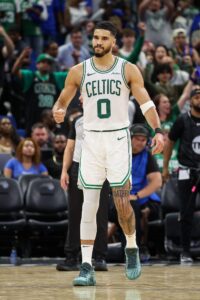 But the Celtics’ path to a second straight championship hit a serious snag in the Eastern Conference semifinals when they blew back-to-back 20-point leads at home to the Knicks, then lost star forward Jayson Tatum to a torn Achilles in Game 4. Boston managed to force the series to six games before bowing out two wins shy of the Eastern Conference finals.
But the Celtics’ path to a second straight championship hit a serious snag in the Eastern Conference semifinals when they blew back-to-back 20-point leads at home to the Knicks, then lost star forward Jayson Tatum to a torn Achilles in Game 4. Boston managed to force the series to six games before bowing out two wins shy of the Eastern Conference finals.
A certain level of belt tightening had been anticipated this summer in Boston even before the season ended the way it did. The Celtics had been operating in second-apron territory for consecutive seasons, and even if the incoming ownership group were willing to spend the sizable luxury tax penalties that accompany a team salary of that size, the front office was finding it increasingly more difficult to add reinforcements to an aging roster due to apron-related restrictions.
After Tatum tore his Achilles and the club failed to make it out of the second round, the question went from “Will the Celtics shed salary?” to “Just how much salary will they shed?”
That question may not be fully answered until later in the season, as Boston’s cost-cutting efforts appear to be ongoing. But after entering the offseason with a projected team salary of $230MM+, the Celtics have reduced that number to about $200MM. They’re still in apron territory, but they sit comfortably below the second apron and may be able to dip below the first apron – or even the luxury tax line – at some point before season’s end.
A pair of transactions played a significant role in the Celtics’ salary reduction. First the team agreed to send Kristaps Porzingis to the Hawks in a three-team trade that also involved the Nets. Then president of basketball operations Brad Stevens and his front office flipped Georges Niang – the player acquired from the Hawks for Porzingis – to the Jazz without taking back any players on standard contracts.
Porzingis is set to earn $30.7MM on an expiring deal in 2025/26, so removing him from the books generated massive savings for the Celtics, who had initially been projected to pay a record-setting tax bill of approximately $280MM — that number has since dropped to roughly $40MM.
As talented as Porzingis is, his contract isn’t especially team-friendly and his health was a question mark entering the summer after he was plagued during last season’s final few months by a mysterious illness later described as post-viral syndrome. As a result, moving him represented a pure salary dump for the Celtics, who gave up more second-round picks (three) than they got back (one) in their trades with Atlanta/Brooklyn and Utah.
Boston’s other major cost-cutting trade of the summer saw the team send Jrue Holiday to Portland straight up for Anfernee Simons. The gap between Holiday’s $32.4MM salary and Simons’ $27.7MM cap hit isn’t massive, but the deal created significant multiyear flexibility for the Celtics. Holiday’s contract spans three seasons and is worth $104.4MM in total, whereas Simons is on an expiring contract and will come off the books next summer.
While Holiday looks like the more valuable player than Simons right now, he’s also 35 years old and his medicals were concerning enough that after initially agreeing to attach a pair of second-round picks to Simons as part of the deal, Portland was able to convince Boston to complete the trade without those picks included. The Celtics will miss the hard-nosed guard in the short term, but it’s possible they’ll be relieved in a couple years to no longer have that contract on their cap.
Simons isn’t nearly the defender Holiday is, but he’s a more dangerous scorer, having averaged roughly 20 points per game and making over 38% of his three-point attempts during his final four seasons in Portland. If the Celtics do want to keep chipping away at their team salary, Simons is the most obvious candidate to be flipped in the same way that Niang was. But for the time being, it looks like he’ll open the season as one of the club’s go-to options on offense alongside star wing Jaylen Brown.
Outside of Simons and first-round pick Hugo Gonzalez – who, at age 19, may not be ready to contribute immediately – the Celtics were limited to minimum-salary free agent signings this offseason. With Tatum likely to miss most or all of 2025/26, Porzingis traded, and Luke Kornet and Al Horford departing in free agency, the Celtics entered the market looking to add a wing and a couple frontcourt players.
One of those frontcourt additions was Chris Boucher, a longtime Raptor who is capable of blocking a shot on one end of the court and knocking down a three-pointer on the other. Consistency has been a challenge for Boucher, but he provides energy off the bench and his willingness to let it fly from beyond the arc certainly fits the Celtics’ game plan.
Boston’s other two notable free agent signings were a little less conventional, as the team swooped in during the first 24 hours of free agency on two little-used Timberwolves who had their team options declined by Minnesota in June, signing Luka Garza and Josh Minott to guaranteed minimum-salary contracts.
Neither player has shown much at the NBA level, but Garza has put up monster numbers in the G League and Minott received rave reviews from Wolves staffers last fall. The goal in Boston will be to replicate the success the team had with a player like Kornet, who became a productive rotation player in recent years after several seasons as a journeyman.
Up next
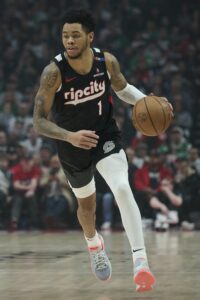 Jordan Walsh and Neemias Queta don’t have fully guaranteed salaries for 2025/26, but both players look like safe bets to make the opening night roster alongside the Celtics’ 12 players on guaranteed deals. The team will likely open the season without a 15th man in order to maximize its roster and financial flexibility.
Jordan Walsh and Neemias Queta don’t have fully guaranteed salaries for 2025/26, but both players look like safe bets to make the opening night roster alongside the Celtics’ 12 players on guaranteed deals. The team will likely open the season without a 15th man in order to maximize its roster and financial flexibility.
As noted above, we can’t entirely rule out the possibility of a preseason trade – involving Simons or another player – that further reduces Boston’s payroll, but there hasn’t been much chatter on that front as of late. The front office will have until the trade deadline to explore additional cost-cutting moves.
All three of the Celtics’ two-way slots are currently occupied, with the club’s two 2025 second-round picks – Amari Williams and Max Shulga – joined by RJ Luis, who was acquired from the Jazz in the Niang trade. Luis reportedly received a two-way offer from Boston at the start of the offeason before signing with Utah, so he shouldn’t simply be viewed as a trade throw-in. But if the Celtics do decide to make a change to one of their two-way slots before the season begins, he’d probably be more at risk to be waived than one of the team’s recent draftees.
Finally, while the Celtics have a couple players eligible for veteran contract extension, neither Simons nor Walsh looks like a legitimate candidate for a new deal at this point. Simons is more likely to be traded than extended, while Walsh still needs to establish himself as an NBA rotation player after playing fewer than 500 total minutes in his first two years in the league.
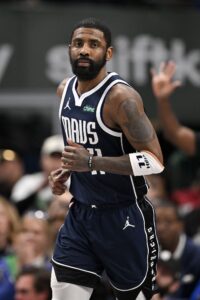
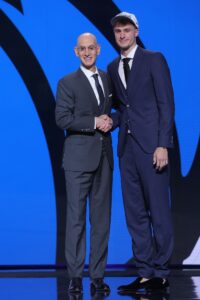 A not-insignificant number of Mavs supporters appeared ready to give up on the team after the front office traded perennial MVP candidate
A not-insignificant number of Mavs supporters appeared ready to give up on the team after the front office traded perennial MVP candidate  With little room to maneuver below their hard cap, the Mavericks will likely enter the regular season with their current 15-man standard roster. Outside of making a trade, the only option they would have to create some additional flexibility would be to waive Williams, whose minimum-salary contract is only partially guaranteed for $200K for now.
With little room to maneuver below their hard cap, the Mavericks will likely enter the regular season with their current 15-man standard roster. Outside of making a trade, the only option they would have to create some additional flexibility would be to waive Williams, whose minimum-salary contract is only partially guaranteed for $200K for now.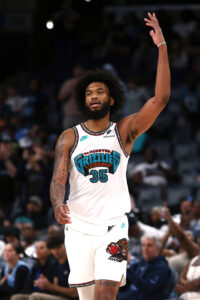
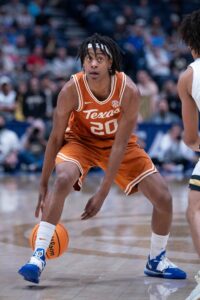 While that Wall/Westbrook trade may feel like ancient history, the traded pick involved in the deal continues to loom large over the franchise. It’s a big reason why the majority of the Wizards’ moves this summer weren’t about adding win-now help, but were instead about creating financial flexibility, taking fliers on former first-round picks, or continuing to accumulate future draft assets. Washington made four trades this offseason and each of them falls into one or more of those three categories.
While that Wall/Westbrook trade may feel like ancient history, the traded pick involved in the deal continues to loom large over the franchise. It’s a big reason why the majority of the Wizards’ moves this summer weren’t about adding win-now help, but were instead about creating financial flexibility, taking fliers on former first-round picks, or continuing to accumulate future draft assets. Washington made four trades this offseason and each of them falls into one or more of those three categories.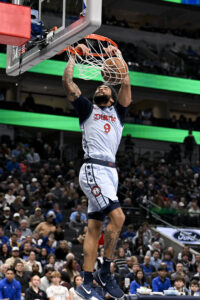 It’s also not clear if Jones, who was acquired in that aforementioned trade with the Thunder, is someone Washington actually likes or if the front office just made the deal for the second-round pick that was attached to him. He looks like another potential release candidate.
It’s also not clear if Jones, who was acquired in that aforementioned trade with the Thunder, is someone Washington actually likes or if the front office just made the deal for the second-round pick that was attached to him. He looks like another potential release candidate.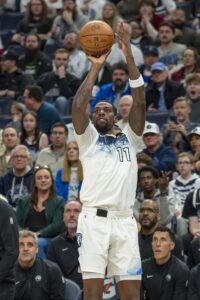
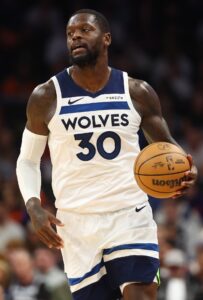 Marc Lore, Alex Rodriguez, and their “
Marc Lore, Alex Rodriguez, and their “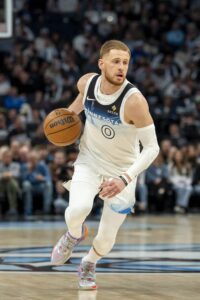 Minnesota also has enough wiggle room below the second apron to add a 15th man on a minimum deal or even using a modest portion of the taxpayer mid-level exception. But the Wolves are far enough into the tax that they’d be paying a penalty of $3.50 per dollar on that 15th man’s salary, so it would have to be someone they really like.
Minnesota also has enough wiggle room below the second apron to add a 15th man on a minimum deal or even using a modest portion of the taxpayer mid-level exception. But the Wolves are far enough into the tax that they’d be paying a penalty of $3.50 per dollar on that 15th man’s salary, so it would have to be someone they really like.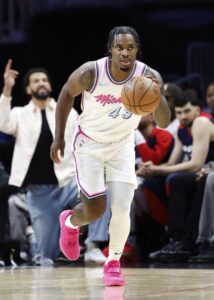
 The other notable offseason move the Heat made as a result of their Butler trade was using the No. 20 overall pick in the draft on
The other notable offseason move the Heat made as a result of their Butler trade was using the No. 20 overall pick in the draft on  The front office will have a major decision to make next month on
The front office will have a major decision to make next month on 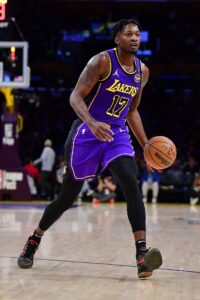
 The trade that sent
The trade that sent  Still, it won’t be a quiet October in Houston. The team has two big contract decisions to make, as both Durant (veteran) and
Still, it won’t be a quiet October in Houston. The team has two big contract decisions to make, as both Durant (veteran) and 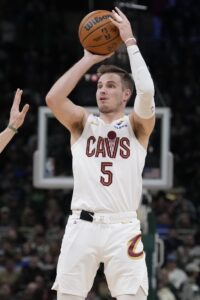
 After the Suns, Celtics, and Timberwolves got a first-hand look last season at the impact of operating in the second tax apron, those teams were all in the process of moving below that threshold this summer. Would the Cavs really be willing to go deeper into the second apron in order to re-sign guys who played key roles for the 2024/25 squad, such as
After the Suns, Celtics, and Timberwolves got a first-hand look last season at the impact of operating in the second tax apron, those teams were all in the process of moving below that threshold this summer. Would the Cavs really be willing to go deeper into the second apron in order to re-sign guys who played key roles for the 2024/25 squad, such as 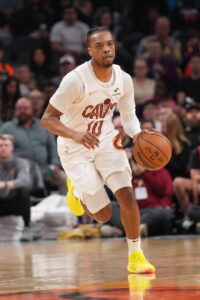 The Cavs could even target one more big man to further fortify their frontcourt behind Allen and Mobley, given that Nance is coming off a season-ending
The Cavs could even target one more big man to further fortify their frontcourt behind Allen and Mobley, given that Nance is coming off a season-ending 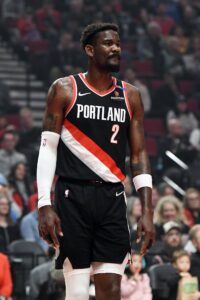
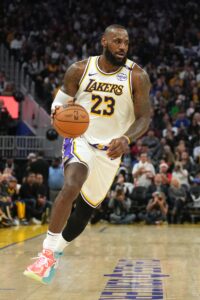 Within that statement, Paul said that LeBron “knows the Lakers are building for the future,” wants to contend for a title, and understands “the difficulty in winning now while preparing for the future.”
Within that statement, Paul said that LeBron “knows the Lakers are building for the future,” wants to contend for a title, and understands “the difficulty in winning now while preparing for the future.”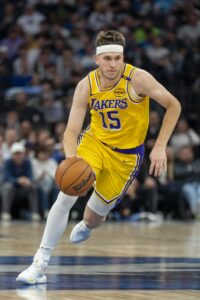 While the Lakers only have 14 players on standard guaranteed contracts, they don’t currently have a path to adding a 15th man, since they’re only operating $1.1MM away from their first-apron hard cap. If they don’t shed salary by making a trade or buying out a player, they’d have to wait until at least mid-January to sign a veteran free agent.
While the Lakers only have 14 players on standard guaranteed contracts, they don’t currently have a path to adding a 15th man, since they’re only operating $1.1MM away from their first-apron hard cap. If they don’t shed salary by making a trade or buying out a player, they’d have to wait until at least mid-January to sign a veteran free agent.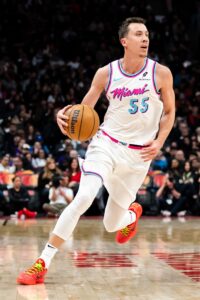
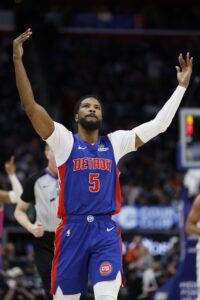 Heading into the offseason, there was speculation that Detroit would try to keep the band together by re-signing free agents
Heading into the offseason, there was speculation that Detroit would try to keep the band together by re-signing free agents 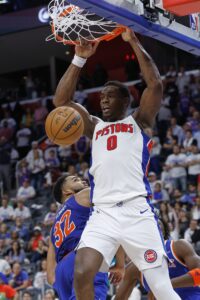 Detroit is currently carrying 13 players on guaranteed contracts, plus Green on a partially guaranteed minimum-salary deal, so even if they don’t do anything major before opening night, the Pistons could add a 15th man in free agency.
Detroit is currently carrying 13 players on guaranteed contracts, plus Green on a partially guaranteed minimum-salary deal, so even if they don’t do anything major before opening night, the Pistons could add a 15th man in free agency.